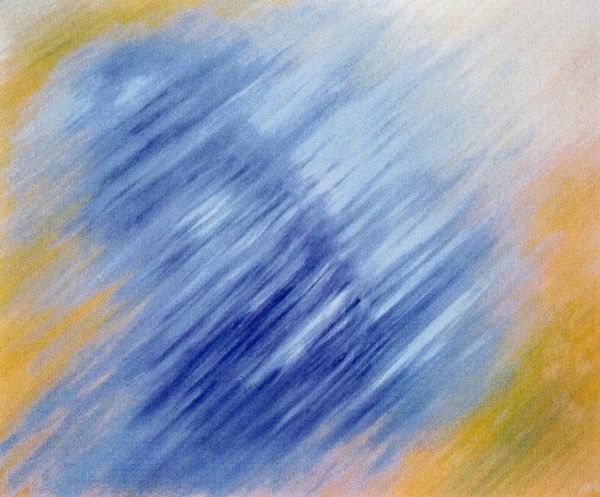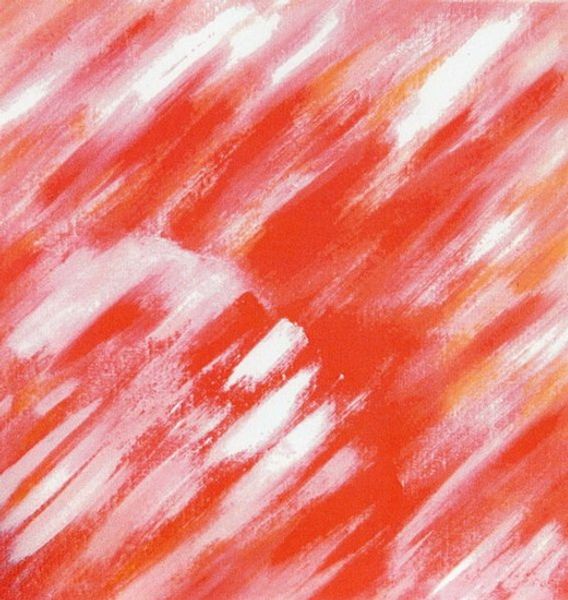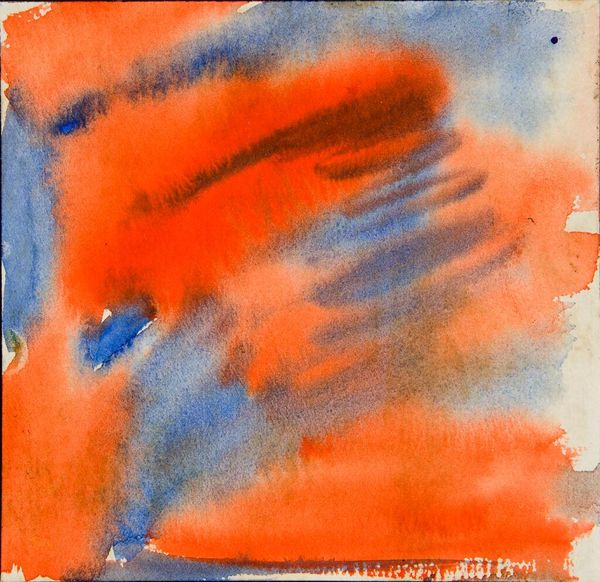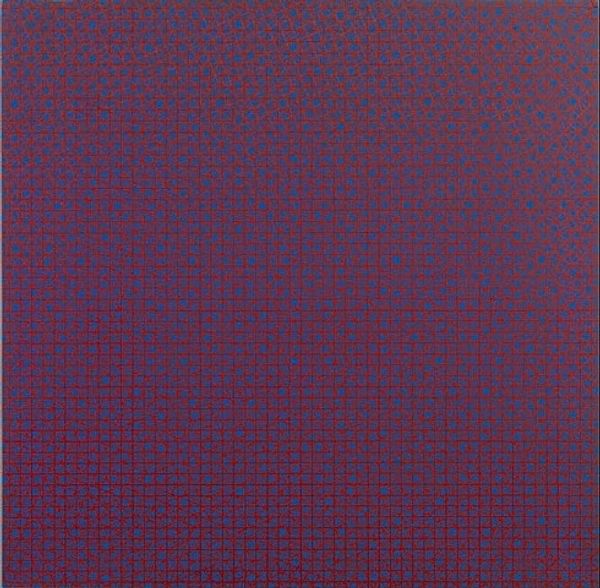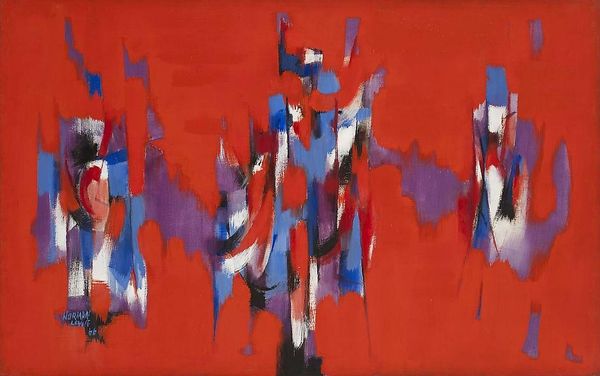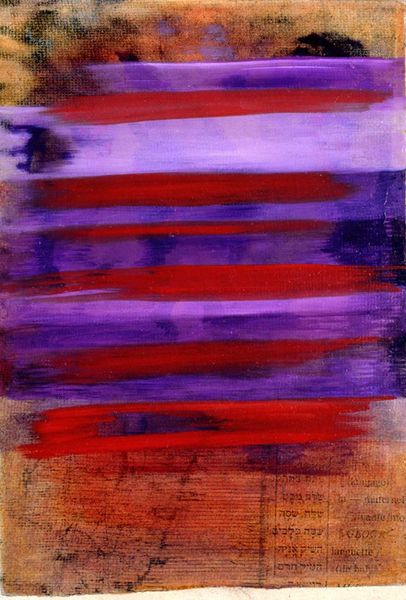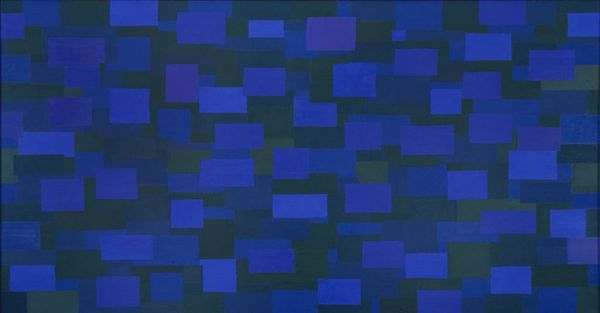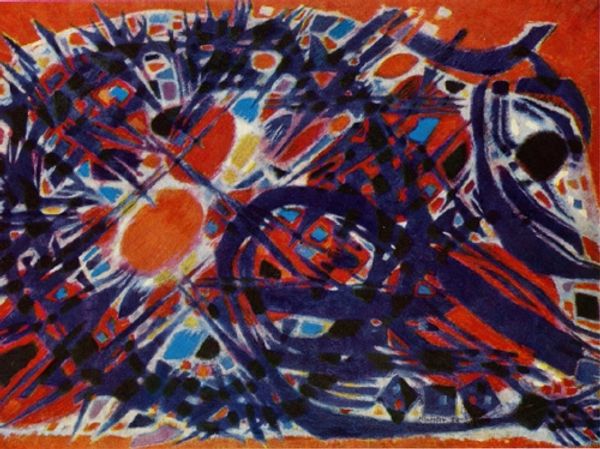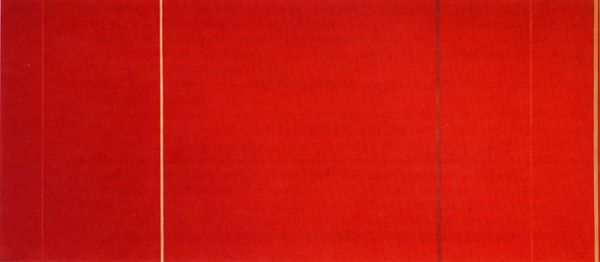
Copyright: Ion Pantilie,Fair Use
Curator: This is Ion Pantilie’s "Backwater I," completed in 2005, a striking example of his mixed-media approach, predominantly utilizing acrylic paint with an impasto technique. Editor: My immediate reaction is of fiery energy. The intense orange feels almost oppressive, contrasting sharply with the streaking blues and whites—it's visually quite turbulent. Curator: Indeed. The colour field painting elements are very evocative. The use of line in contrast with the impasto layers suggests a conflict, or perhaps a transformation. Consider the historical context of colour field painting, its rejection of overt symbolism, instead, aiming for pure chromatic experience. Does that align with your read as turbulent? Editor: I think so. The historical context of color field certainly is significant. However, abstract expressionism isn’t simply about formal concerns or "pure experience," right? The energetic brushstrokes, for example, evoke a sense of post-war anxiety that should be factored in here too. The contrast in the colour and line hints towards broader cultural and even political dichotomies of the time. Curator: Interesting. But could it not also be a deeply personal statement by Pantilie? A pure visual study of clashing colours and textures divorced from specific geopolitical interpretations? His mastery of impasto—the layering and thick application—allows the colours to literally compete for space. It's fascinating purely as a material interaction. Editor: Certainly, there’s a tactile, material element at play. But considering abstract expressionism’s context, we cannot ignore the psychological weight artists were dealing with. It goes beyond pure materiality—doesn’t it speak to the anxieties and fragmentations individuals experienced? And while Pantilie isn't American, those global dialogues would have certainly touched him. Curator: Perhaps the true beauty lies precisely in that ambiguity. Whether it is a study of material or metaphor, it ignites our imagination. Editor: Yes, it invites endless dialogues, reminding us that even abstract expression isn’t created in a vacuum. Both materiality and context make art meaningful, and it all co-exists to push further into our histories and narratives.
Comments
No comments
Be the first to comment and join the conversation on the ultimate creative platform.
